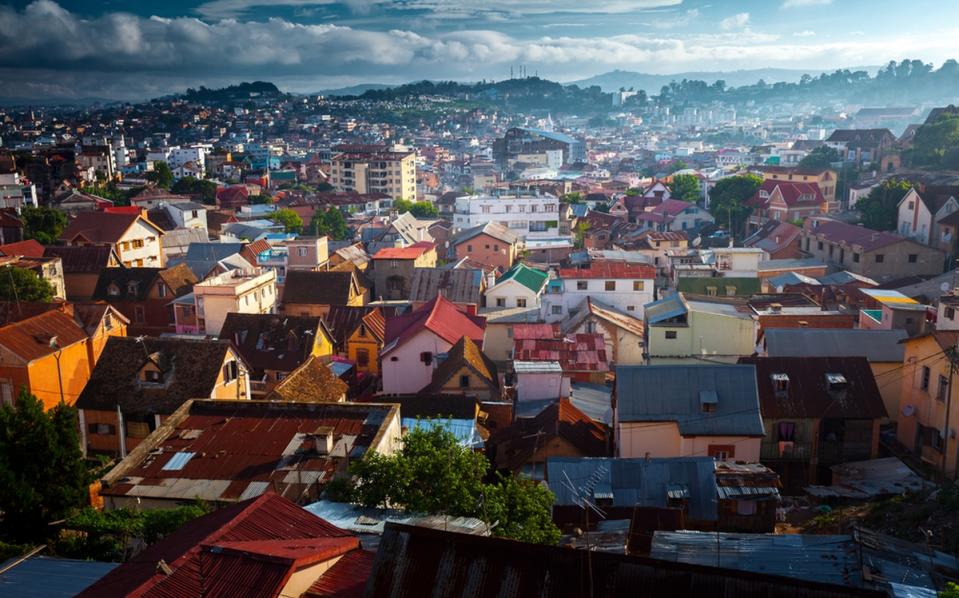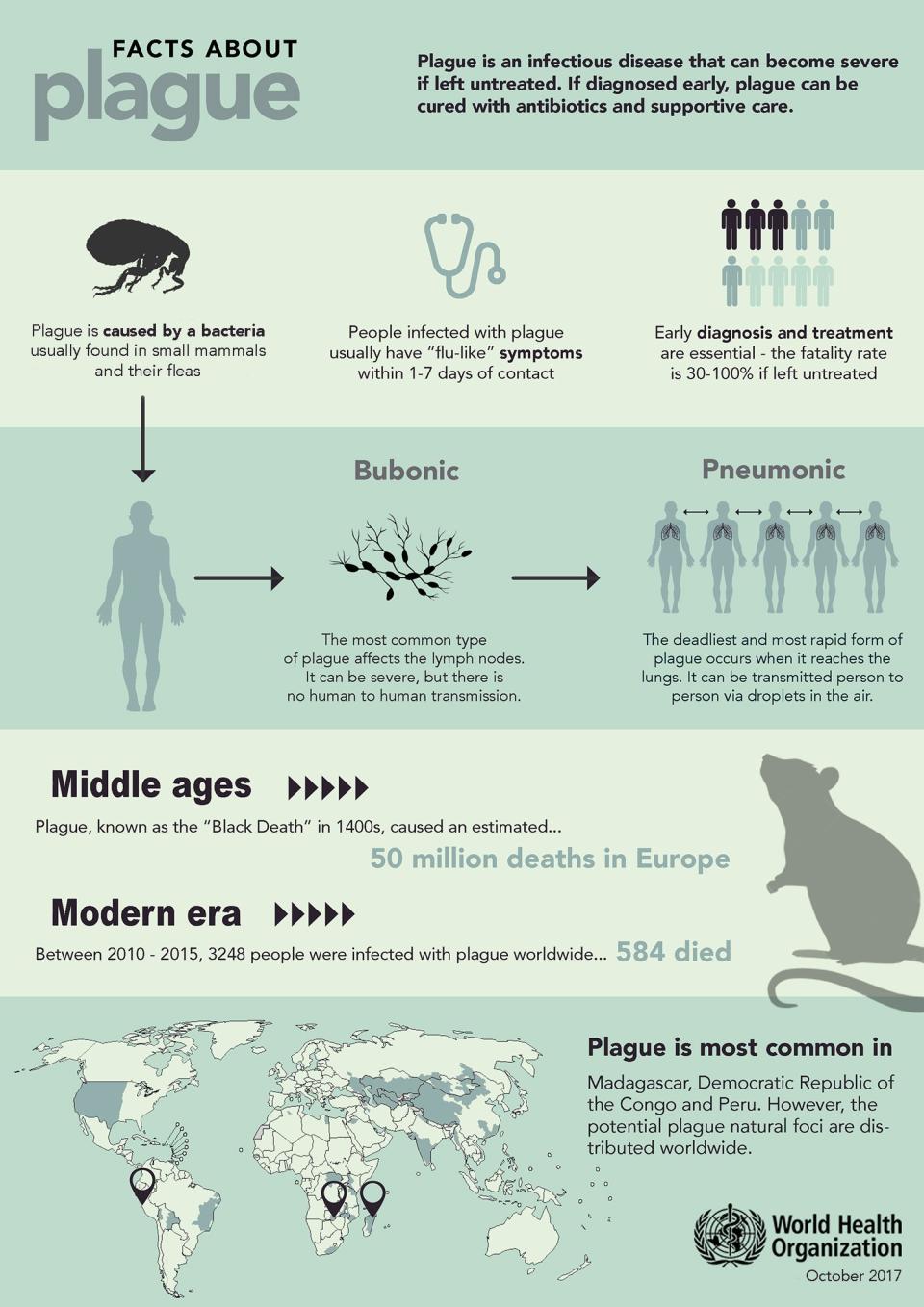Four reasons why deadly airborne plague is spreading in Madagascar

Health workers are trying to contain an outbreak of plague in Madagascar which has infected more than 1,800 people – including 71 health workers.
Many of the cases (62%) in the current outbreak are pneumonic plague, a more virulent form that spreads through coughing, sneezing or spitting and is almost always fatal if untreated.
The World Health Organisation said, ‘Based on available information and response measures implemented to date, WHO estimates the risk of potential further spread of the plague outbreak at national level remains high.’
Most popular on Yahoo News UK:
A third of young Britons are refusing to wear a poppy for Remembrance Sunday
North Korean defector warns pre-emptive US strike would trigger ‘automatic retaliation’
Egypt opens ‘cursed tomb’ at Great Pyramid of Giza for first time
Plague spreads in Madagascar as people dig up relatives who died from Black Death and dance with corpses
Here’s what aliens will really look like, according to science
Health workers are ‘scaling up’ preparations in other southern and east African countries, the World Health Organisation says – although ‘global risk is considered to be low.’
So why is it spreading – and what can be done to contain it? Here are five reasons people think may be behind the plague outbreak.
Is El Nino to blame?
The plague is endemic in Madagascar’s remote areas – but this outbreak is largely concentrated in its two largest cities, Antananarivo and Toamasina.
One expert suggests that El Nino – a fluctuation in Earth’s climate system – may have affected rats, leading to the current outbreak.
Professor Matthew Bayliss told the Express, ‘We have suspicions – and it is no more than a suspicion – that it could be related to the El Niño we had a year ago.’
Professor Bayliss suggests that changes in rainfall may have affected the behaviour of rats, which can spread plague.
Bayliss told Mail Online, ‘2016 was the strongest El Niño on record, and was nicknamed by some “Godzilla”,’ he said. Some have suggested the growing burden of climate change was to blame.
‘It is a change to the movements of water in the Pacific Ocean which then has an effect on climate in many parts of the world, including east and southern Africa.
Is ‘dancing with corpses’ spreading the disease?

Locals on the African island have been ordered to stop the practice of Famadihana, which involves digging up the bodies of deceased relatives and dancing with them before they are reburied.
It is feared that the ceremony may be helping to spread the disease, according to the World Health Organisation.
Willy Randriamarotia, the country’s health chief, told The Sun: ‘If a person dies of pneumonic plague and is then interred in a tomb that is subsequently opened for a Famadihana, the bacteria can still be transmitted and contaminate whoever handles the body.’
Are people avoiding hospitals?

One aid workers suggests that local people may be unwilling to seek help because they ‘associate hospitals with death’.
Panu Saaristo of the Red Cross told Mail Online said that locals may be in ‘fear of the the long time they would have to spend in hospital’
‘People start avoiding healthcare, and that may lead to a situation where people start dying.’
People were ‘caught unaware’ when a man with plague travelled on a bus

A health worker, Dr Tim Jagatic, told the BBC that the plague had spread into populated areas when a man infected with bubonic plague had travelled to a city by bus.
The fact it was outside normal ‘plague season’ – from October to April – meant people were caught unawares.
Dr Jagatic said, ‘He was in a closed environment with many people when he started to develop severe symptoms, and he started to transmit the pneumonic form of the disease to others.
‘He had the bubonic form of the plague and entered into one of the major cities, where the bubonic version of the disease had the potential of turning into the pneumonic form without treatment.’


